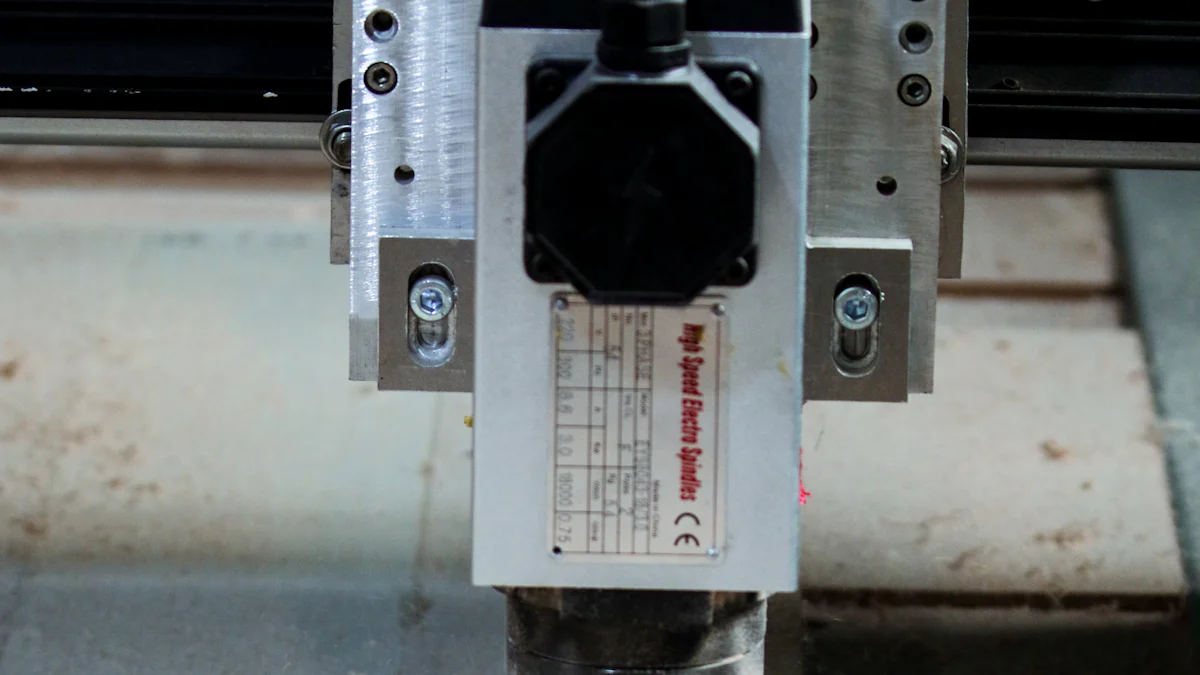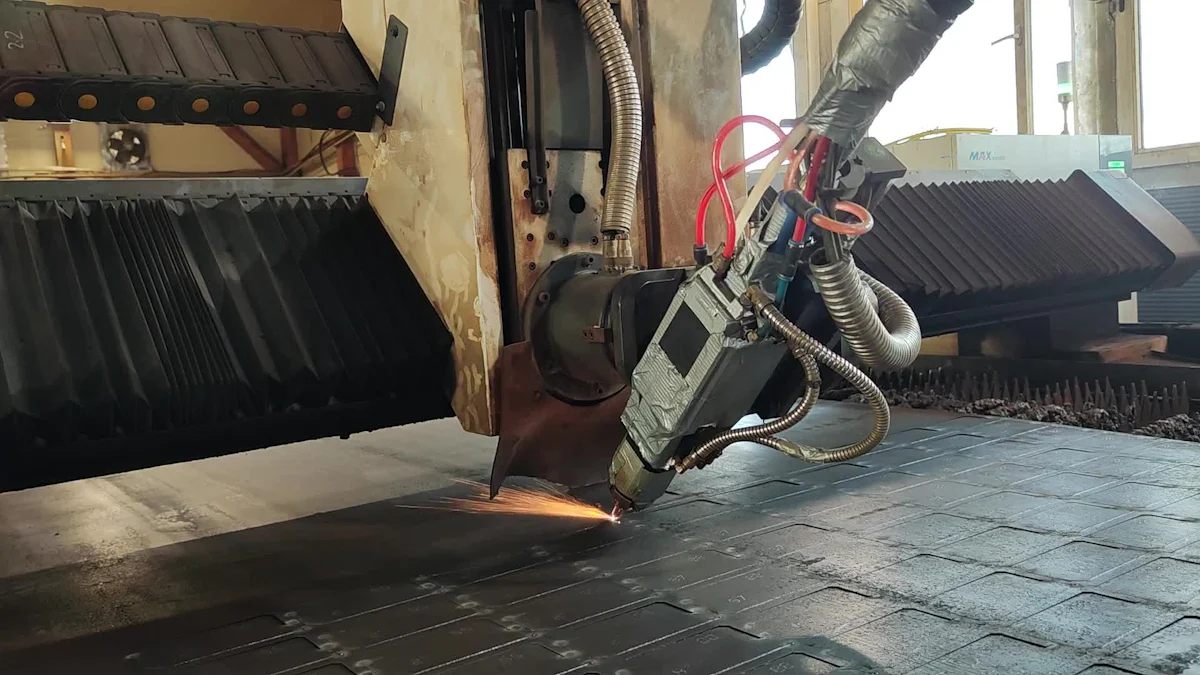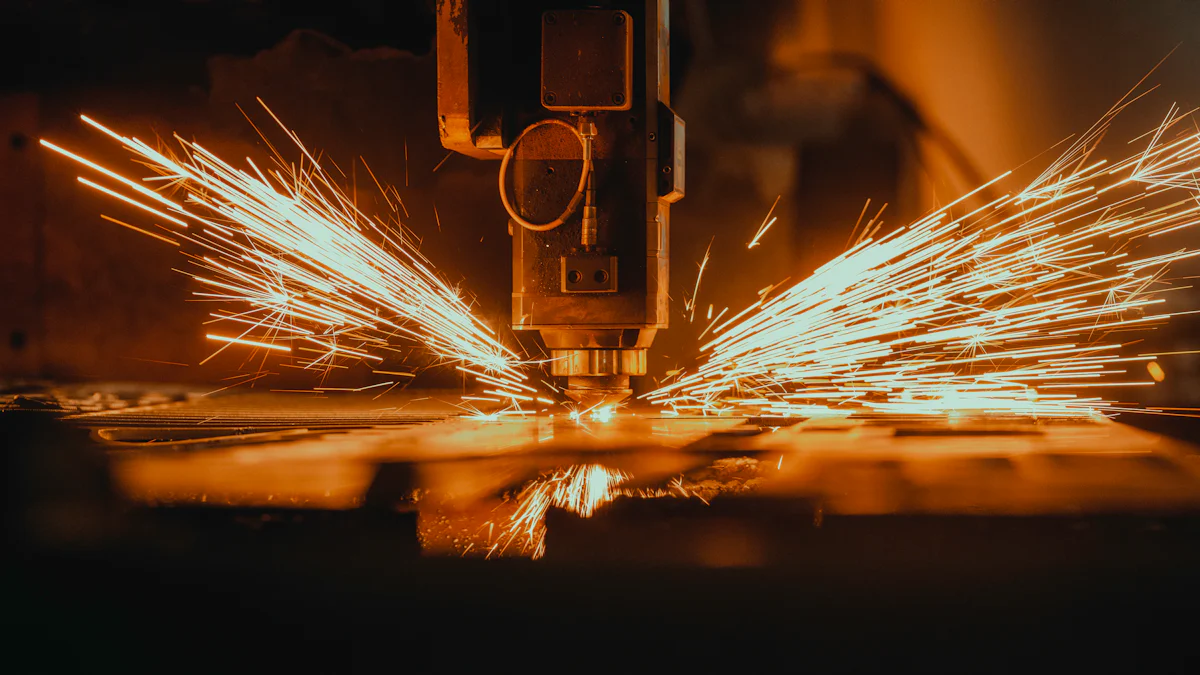How to Operate a CNC Laser Cutting Machine Step-by-Step

Learning how to operate a CNC laser cutting machine may seem daunting initially, but with the proper steps, it becomes a straightforward process. Understanding the setup is crucial—ensure the machine is assembled correctly, secure the materials firmly, and verify all settings before starting. Safety is paramount, so always wear protective gear and thoroughly inspect the equipment. Regular maintenance is essential to keep the machine functioning efficiently and prolong its lifespan. By mastering how to operate a CNC laser cutting machine, you can achieve precise cuts and enhance productivity in your projects.
Key Takeaways
- well-prepared workspace and machine to ensure smooth operation and minimize errors.
- Always prioritize safety by wearing protective gear and ensuring proper ventilation during the cutting process.
- Perform a test run before actual cutting to verify accuracy and catch any potential issues early.
- Regular maintenance, including cleaning and inspecting components, is crucial for optimal machine performance and longevity.
- Monitor the cutting process closely to address any irregularities or misalignments immediately.
- Utilize online resources and tutorials to enhance your skills and confidence, especially as a beginner.
- Practice with simple designs first to build your expertise before tackling more complex projects.
Preparing the Machine and Workspace

Before diving into the operation of a CNC laser cutting machine, you need to prepare both the machine and your workspace.
Setting Up the Machine
Assembling and connecting all components, including the laser tube and cooling system.
Start by assembling the machine. Connect all essential components, such as the laser tube, cooling system, and motion control system. The laser tube generates the high-powered beam, while the cooling system prevents overheating during operation. Ensure every part is securely attached and aligned. A well-assembled machine lays the foundation for precise cuts.
Ensuring the machine is properly connected to power and computer systems.
Next, connect the machine to a stable power source and your computer. The computer acts as the brain of the operation, sending instructions to the machine through the CNC system. Double-check all cables and connections to avoid interruptions. A reliable connection ensures the machine follows the programmed path accurately.
Material Selection and Preparation
Choosing the appropriate material for the project.
Select a material that suits your project. Whether you’re working with wood, metal, plastic, or glass, ensure the material is compatible with the machine’s capabilities. For example, some materials may require specific laser power settings to achieve clean cuts. Choosing the right material is key to achieving the desired results.
Cleaning and securely fixing the material on the cutting bed.
Before placing the material on the cutting bed, clean its surface to remove dust or debris. This step prevents imperfections in the cut. Secure the material firmly on the cutting bed using clamps or adhesive sheets. A stable material ensures the laser beam follows the programmed design without shifting.
Safety Checks
Inspecting the machine for damage or loose parts.
Inspect the machine thoroughly before starting. Look for any signs of wear, damage, or loose components. Pay close attention to the laser lens and moving parts. Addressing these issues early prevents malfunctions during operation.
Ensuring proper ventilation and wearing safety gear.
Good ventilation is essential when operating a CNC laser cutting machine. The cutting process can produce fumes or smoke, depending on the material. Set up an exhaust system or open windows to maintain airflow. Always wear safety gear, including goggles and gloves, to protect yourself from laser exposure and sharp edges.
By following these preparation steps, you’ll set yourself up for success. A well-prepared machine and workspace not only improve efficiency but also ensure safety and precision throughout the cutting process.
How to Operate CNC Laser Cutting Machine
Operating a CNC laser cutting machine might feel overwhelming at first, but breaking it into manageable steps makes the process much easier. Once your machine and workspace are ready, it’s time to bring your designs to life. Let’s dive into the operation phase.
Starting the Machine
Powering on the CNC laser cutter and connected devices.
Begin by powering on the CNC laser cutter and all connected devices, including the computer and cooling system. Ensure everything is functioning properly. The cooling system plays a critical role in preventing the laser tube from overheating, so double-check that it’s running smoothly. A quick glance at the control panel will confirm if the machine is ready to go.
Loading the design file and generating the G-code.
Next, load your design file into the machine’s software. Most CNC laser cutters require a G-code file, which translates your design into instructions the machine can follow. If you’re unsure how to generate G-code, many online resources, like OMTech’s training videos and manuals, provide step-by-step guidance. Once the file is loaded, position the design on the material within the software interface. This ensures the laser cuts exactly where you want it to.
Calibrating the Machine
Adjusting the laser focus and alignment.
Proper calibration is essential for achieving clean and precise cuts. Start by adjusting the laser focus. Most machines include a focus tool or guide to help you set the correct distance between the laser head and the material. Then, check the alignment of the laser beam. Misalignment can lead to uneven cuts, so take your time to ensure everything lines up perfectly.
Setting the correct speed, power, and frequency for the material.
Every material requires specific settings for optimal results. Adjust the speed, power, and frequency based on the type and thickness of the material you’re using. For instance, cutting wood might need lower speed and higher power, while engraving acrylic could require different settings. Many manufacturers provide recommended parameters for common materials, which can save you time and effort.
Running the Machine
Performing a test run or dry run to verify accuracy.
Before activating the laser, perform a test run or dry run. This step allows the machine to follow the programmed path without cutting into the material. Watch closely to ensure the movements match your design. A test run helps you catch any errors in positioning or calibration before starting the actual cut.
Activating the laser and monitoring the cutting process.
Once you’re confident everything is set up correctly, activate the laser and begin the cutting process. Stay nearby and monitor the operation. Keep an eye on the material to ensure it remains secure on the cutting bed. If you notice any irregularities, pause the machine immediately to make adjustments. Monitoring the process not only ensures precision but also enhances safety.
“Practice makes perfect.” If you’re new to CNC laser cutting, consider starting with simple designs to build your confidence. Platforms like YouTube offer excellent tutorials for beginners, helping you master the basics before tackling more complex projects.
By following these steps, you’ll gain a solid understanding of how to operate a CNC laser cutting machine. With practice, you’ll achieve professional-quality results and unlock endless creative possibilities.
Monitoring and Troubleshooting

Operating a CNC laser cutting machine requires constant attention to ensure everything runs smoothly. Monitoring the process and addressing issues promptly can save time and prevent material waste. Let’s explore how you can keep things on track.
Observing the Cutting Process
Watching for irregularities in the cut or engraving.
Keep a close eye on the cutting process. Look for signs like uneven edges, incomplete cuts, or burns on the material. These irregularities often indicate incorrect settings or alignment issues. For example, if the laser power is too high, it might overcut and burn the edges. Adjust the speed or power immediately to fix this. Staying vigilant helps you catch problems early before they escalate.
Ensuring the material remains secure on the cutting bed.
Check that the material stays firmly in place during the operation. Movement can lead to misaligned cuts or distorted designs. Use clamps or adhesive sheets to secure the material. If you notice any shifting, pause the machine and reposition the material. A stable cutting bed ensures precision and prevents errors.
Addressing Common Issues
Fixing misaligned lasers or uneven cuts.
Misaligned lasers can cause uneven cuts or missed sections. To fix this, recalibrate the laser. Adjust the laser focus and alignment to match the cutting surface. Regularly clean the laser lens and mirrors to maintain optimal performance. Dust or debris on these components can reduce the laser’s power, affecting the quality of your cuts. A quick cleaning routine can make a big difference.
Resolving software or connectivity errors.
Software glitches or connectivity issues can disrupt the cutting process. If the machine stops responding, check the connection between the computer and the CNC laser cutter. Restart the software and reload the design file if necessary. Ensure the G-code is error-free and correctly formatted. Keeping your software updated can also prevent compatibility problems.
Pro Tip: Regular maintenance minimizes troubleshooting. Clean the machine weekly, inspect for wear and tear, and replace consumables like nozzles when needed. A well-maintained machine delivers consistent results.
By actively monitoring the cutting process and addressing issues as they arise, you’ll ensure smooth operation and high-quality outcomes. Troubleshooting may seem challenging at first, but with practice, you’ll handle it like a pro.
Post-Operation Procedures
Once you’ve completed your cutting project, it’s important to follow proper post-operation procedures. These steps ensure your CNC laser cutting machine stays in excellent condition and is ready for future use. Let’s break it down into three key areas: cleaning, inspecting, and storing the machine.
Cleaning the Machine
Removing debris and residue from the cutting bed.
After finishing your project, check the cutting bed for leftover debris or residue. Use a soft brush or vacuum to remove any dust, scraps, or particles. Keeping the cutting bed clean prevents buildup that could interfere with future cuts. A clean surface also ensures your materials sit flat and secure during operation.
Cleaning the laser lens and other components.
The laser lens plays a critical role in delivering precise cuts. Over time, dust and residue can accumulate on the lens, reducing its efficiency. Use a lens cleaning solution and a microfiber cloth to gently clean the lens. Avoid using abrasive materials that could scratch it. Don’t forget to inspect and clean other components, like mirrors and nozzles, to maintain optimal performance.
Tip: Regular cleaning not only improves cutting accuracy but also extends the lifespan of your machine. Make it a habit after every use.
Inspecting the Machine
Checking for wear and tear on parts.
Take a few minutes to inspect the machine for signs of wear and tear. Look closely at moving parts, belts, and gears. If you notice any frayed belts, loose screws, or worn-out components, address them immediately. Replacing damaged parts early prevents bigger issues down the line.
Ensuring all components are in good working condition.
Run a quick check to ensure all components are functioning properly. Test the cooling system, motion controls, and laser alignment. If anything seems off, troubleshoot or consult the manufacturer’s guidelines. Regular inspections help you catch potential problems before they affect your projects.
Pro Tip: Following the manufacturer’s maintenance schedule can save you time and money. Many manufacturers recommend routine checks to keep the machine running smoothly.
Storing the Machine
Powering down and unplugging the machine.
When you’re done, power down the machine completely. Unplug it from the power source to prevent electrical issues or accidental startups. This step is especially important if you won’t be using the machine for an extended period.
Covering the machine to protect it from dust.
Dust can settle on your machine and affect its performance over time. Use a protective cover to shield it from dust and debris. Store the machine in a clean, dry environment to avoid moisture-related damage. Proper storage keeps your equipment in top condition and ready for your next project.
Reminder: A well-maintained and properly stored machine not only performs better but also lasts longer. Treat your CNC laser cutter with care, and it will reward you with consistent results.
By following these post-operation procedures, you’ll ensure your CNC laser cutting machine remains reliable and efficient. Regular cleaning, thorough inspections, and proper storage are simple steps that make a big difference in the long run.
Maintenance and Care
Proper maintenance ensures your CNC laser cutting machine performs at its best and lasts for years. By following routine tasks and adopting long-term care practices, you can avoid costly repairs and downtime. Let’s explore how you can keep your machine in top shape.
Routine Maintenance Tasks
Lubricating moving parts as needed.
Moving parts like rails, gears, and bearings need regular lubrication to function smoothly.
Replacing worn-out components like belts or lenses.
Over time, components like belts and lenses wear out due to constant use. Worn belts can affect the accuracy of the machine’s movements, while dirty or damaged lenses reduce the laser’s cutting power. Inspect these parts regularly and replace them when necessary. For example, CO2 laser machines often require lens cleaning and replacement more frequently than fiber lasers. Staying proactive with replacements prevents unexpected breakdowns during critical projects.
Tip: Keep spare parts like belts, lenses, and nozzles on hand. This ensures you can quickly swap out worn components without delaying your work.
Long-Term Care Tips
Scheduling regular professional servicing.
Even with routine maintenance, professional servicing is essential.
Keeping the machine in a clean and dry environment.
The environment where you store your machine plays a significant role in its longevity. Dust, moisture, and extreme temperatures can damage sensitive components. Place your machine in a clean, dry space with stable conditions. Use a dust cover when the machine is not in use to protect it from debris. A controlled environment minimizes wear and ensures consistent performance.
Pro Tip: Clean the workspace around your machine regularly. A tidy area reduces the risk of dust and particles interfering with the machine’s operation.
By following these maintenance and care practices, you’ll ensure your CNC laser cutting machine stays reliable and efficient. A little effort now saves you from bigger headaches later, keeping your projects on track and your machine in excellent condition.
Operating a CNC laser cutting machine becomes second nature when you follow the right steps. From preparing the workspace to calibrating the machine and monitoring the process, each phase plays a vital role in achieving precise results. Always prioritize preparation, stay attentive during operation, and maintain your machine regularly to ensure long-term efficiency. For beginners, start with simple designs to build confidence and gradually explore more intricate projects. Take advantage of online tutorials, forums, and manufacturer resources to enhance your skills. With practice and patience, you’ll master how to operate CNC laser cutting machine and unlock endless creative possibilities.
FAQ
What is CNC laser cutting?
CNC laser cutting is a manufacturing process that uses a high-powered laser beam to cut materials and create intricate patterns or designs. The "CNC" stands for Computer Numerical Control, meaning the machine follows precise instructions from a computer program to achieve accurate results.
How does CNC laser cutting work?
A CNC laser cutting machine directs a focused laser beam onto the material's surface. The intense heat either melts, burns, or vaporizes the material, creating clean and precise cuts. The machine follows a programmed path, ensuring the design is executed with high accuracy.
What types of materials can be cut using a CNC laser cutting machine?
CNC laser cutters can handle a wide range of materials, including metal, wood, plastic, and glass. However, the material's compatibility depends on the machine's power and settings. Always check your machine's specifications to ensure it can cut the material you plan to use.
Can I use a CNC laser cutter for engraving?
Yes, CNC laser cutters are excellent for engraving. You can use them to etch detailed designs, logos, or text onto various materials like wood, acrylic, or metal. Engraving requires adjusting the laser's power and speed to avoid cutting through the material.
Is CNC laser cutting hard to learn?
Operating a CNC laser cutter requires some training and practice. You need to understand the machine's components, software, and safety protocols. While it may seem challenging at first, consistent practice and learning resources, like tutorials, can make the process much easier.
What are the advantages of using CNC laser cutting?
CNC laser cutting offers several benefits, including exceptional accuracy, precision, and the ability to work with diverse materials. It also allows for intricate designs that would be difficult to achieve with traditional cutting methods. Additionally, the process is fast and efficient, making it ideal for both small and large-scale projects. How much laser cutting machine cost.
Are there any limitations to CNC laser cutting?
Yes, CNC laser cutting has some limitations. These include the size of the cutting area, the machine's power output, and material compatibility. For example, thicker materials may require higher-powered lasers, and some materials, like certain plastics, may release harmful fumes when cut.
How long does CNC laser cutting typically take?
The time required for CNC laser cutting depends on factors like the material's thickness, the complexity of the design, and the machine's power settings. Simple designs on thin materials can take just a few minutes, while intricate patterns on thicker materials may take longer.
What are some design tips for CNC laser cutting?
To achieve the best results, keep your designs simple and avoid overly intricate details, especially if you're a beginner. Use vector-based design software to create clean and scalable designs. Also, ensure your design file is compatible with the machine's software and double-check the material's dimensions before starting.
How does CNC laser cutting compare to other cutting technologies?
CNC laser cutting stands out for its precision, speed, and versatility. Unlike traditional cutting methods, it can handle complex designs with ease and produce clean edges without additional finishing. While other technologies, like waterjet or plasma cutting, have their advantages, CNC laser cutting excels in accuracy and detail.
See Also
Understanding The Functionality Of CNC Laser Cutters
Maximizing Efficiency When Operating A Laser Cutter
A Simple Explanation Of Laser Cutting Machine Operation
